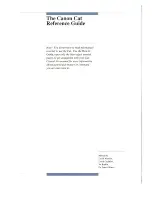
v
Define
a
“dummy”
LP
(a
“dummy”
LP
configured
with
1
logical
CP
is
sufficient)
v
Make
sure
that
the
logical
CP
in
the
“dummy”
LP
is
in
a
fully
enabled
wait
state
(the
first
four
bytes
of
the
PSW
must
be
X'030E000')
If
you
have
configured
the
“dummy”
LP
with
more
than
1
logical
CP
(this
is
not
recommended),
you
will
have
to
put
each
logical
CP
in
a
fully
enabled
wait
state.
(Alternatively,
each
logical
CP
in
the
“dummy”
LP
can
be
running
a
branch
loop
to
waste
time.)
With
event-driven
dispatching
disabled
and
the
“dummy”
LP
in
a
fully
enabled
wait
state,
PR/SM
LPAR
will
dispatch
the
logical
CPs
on
the
basis
of
time
intervals
according
to
the
specified
weights.
This
situation
does
not
apply
if
either
of
the
following
is
true:
v
Event-driven
dispatching
is
enabled
v
Event-driven
dispatching
is
disabled
and
more
than
one
LP
is
activated
and
running
an
operating
system
Use
the
Customize/Delete
Activation
Profiles
task
available
from
the
CPC
Operational
Customization
tasks
list
to
open
a
reset
profile
to
enable
or
disable
event-driven
dispatching
for
an
LP.
On
the
Options
page,
select
Do
not
end
the
time
slice
if
a
partition
enters
a
wait
state
to
disable
event-driven
dispatching
for
the
LP.
To
enable
event-driven
dispatching
for
the
LP,
do
not
select
this
option.
Processor
Running
Time
The
processor
running
time
is
the
length
of
continuous
time
(determined
by
the
dispatch
interval)
allowed
for
the
dispatch
of
a
logical
CP.
When
the
processor
running
time
is
dynamically
determined
by
the
system,
the
calculation
of
the
default
running
time
is
performed
separately
for
general
purpose
and
ICF
CPs.
All
logical
processors
that
are
shared,
either
general
purpose
or
ICF,
will
be
assigned
a
default
running
time
but
the
values
used
for
each
type
of
processor
may
be
different.
If
a
user-defined
run
time
is
specified,
the
value
applies
to
all
shared
general
purpose
and
shared
ICF
CPs.
The
default
value
is
dynamically
calculated
and
changes
when
the
number
of
active,
scheduled
logical
CPs
changes.
The
default
running
time
is
determined
using
the
formula:
25 milliseconds x (number of physical shared CPs)
(total number of logical CPs not in stopped state for all sharing LPs)
The
default
value
is
used
whenever
the
processor
running
time
is
dynamically
determined
by
the
system.
The
run-time
value
can
change
whenever
an
LP
is
activated
or
deactivated
and
when
a
logical
CP
stops
or
starts
(for
instance,
when
a
logical
CP
is
configured
online
or
offline).
The
default
processor
running
time
is
limited
to
the
range
of
12.5
to
25
milliseconds.
The
logical
CP
might
not
use
all
of
its
run
time
because
it
goes
into
a
wait
state.
With
event-driven
dispatching,
when
a
logical
CP
goes
into
a
wait
state,
the
physical
CP
is
reassigned
to
another
logical
CP
ready
to
do
work.
When
a
logical
CP
does
not
go
into
a
wait
state
during
its
run
time,
it
loses
the
physical
CP
when
it
reaches
the
end
of
its
run
time.
Therefore,
an
LP
with
CP-bound
work
cannot
permanently
take
control
of
the
physical
CPs.
Chapter
3.
Determining
the
Characteristics
of
Logical
Partitions
3-43
Содержание Z9
Страница 1: ...System z9 Processor Resource Systems Manager Planning Guide SB10 7041 03...
Страница 2: ......
Страница 3: ...System z9 Processor Resource Systems Manager Planning Guide SB10 7041 03...
Страница 12: ...x PR SM Planning Guide...
Страница 18: ...xvi PR SM Planning Guide...
Страница 26: ...xxiv PR SM Planning Guide...
Страница 43: ...ZVSE ZVM Figure 1 1 Characteristics of Logical Partitions Chapter 1 Introduction to Logical Partitions 1 17...
Страница 54: ...1 28 PR SM Planning Guide...
Страница 126: ...2 72 PR SM Planning Guide...
Страница 195: ...Figure 3 23 Security Page Image Profile Chapter 3 Determining the Characteristics of Logical Partitions 3 69...
Страница 220: ...4 8 PR SM Planning Guide...
Страница 232: ...5 12 PR SM Planning Guide...
Страница 250: ...B 16 PR SM Planning Guide...
Страница 266: ...D 10 PR SM Planning Guide...
Страница 272: ...X 6 PR SM Planning Guide...
Страница 273: ......
Страница 274: ...Printed in USA SB10 7041 03...
















































